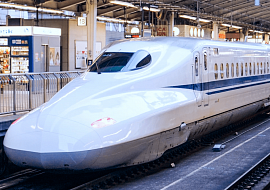IoT Fleet Management Made Comprehensive: Covering All Bases
Fleet management becomes more challenging as industries grow in complexity and resource intensity. While passenger cars now integrate seamlessly with IoT, industrial vehicles face tougher hurdles – operational inefficiencies, costly downtimes, and complex compliance requirements. Alarmingly, traditional fleet management methods fail to address up to 40% of operational inefficiencies, severely impacting bottom lines.
Is it possible to craft a comprehensive, future-proof IoT fleet management solution? This technical guide examines the essential parameters of such systems, demonstrating how each element drives operational excellence through measurable outcomes.
The Architecture of IoT Fleet Management, a Solid Foundation
What technologies are essential for industrial fleet management? It’s simpler to consider what isn’t. A robust, future-ready solution must encompass:

For IoT fleet management solution, scalability and reliability are crucial to ensure the system can handle growing fleets and maintain uninterrupted service. It uses load balancers, containerization, cloud-based infrastructure, and redundancy mechanisms to provide flexible scaling and high availability. The integrated architecture enables IoT fleet management solutions to offer a comprehensive, secure, and scalable platform for optimizing fleet operations, reducing costs, and improving efficiency in the logistics and industrial sectors.
Real-time Monitoring, The Backbone of IoT Fleet Management
Modern fleet operations depend on sophisticated monitoring systems delivering immediate feedback. These systems combine multiple IoT sensors and telematics equipment that collect and transmit vital vehicle data, making it transparent anytime. GPS tracking is the lifeblood here informing on precise locations, speeds, and routes immediately via satellites. This technology creates virtual boundaries through geofencing and alerts managers when vehicles enter or exit predetermined areas.
Vehicle Telemetry, A Data-Driven Approach
Comprehensive monitoring requires continuous tracking of:
-
Temperature and performance metrics
-
Fuel levels and consumption patterns
-
Tire pressure readings
-
Odometer data
-
Brake wear indicators
IoT telematics devices transform fleet management by converting vehicle data into strategic insights. These smart systems provide real-time information on asset use, fuel efficiency, maintenance needs, safety concerns, and cost factors. On top of this, onboard diagnostic systems are advancing, turning regular vehicles into mobile data centers and giving an explanation about vehicle health and optimization.
Predictive Maintenance of IoT Fleet Management, Downtime Reduction
PdM is widely adopted, with a wealth of best practices accumulated. The recent data shows that this data-driven approach cuts maintenance costs by up to 25%, and unplanned downtime by 3 hours per diagnostic event.
Sensor-Based Diagnostics in IoT Fleet Management
We start by setting up a detailed network of sensor across the assets, typically utilizing 80 units to track key parameters, including:
-
Engine diagnostics
-
Brake system conditions
-
Transmission health indicators
-
Electrical system parameters
-
Advanced driver assistance systems
Once centralized, this data enables precise fault detection as they happen and predicts serious potential issues.
Maintenance Scheduling Algorithms
Smart scheduling protocols harness machine learning to analyze performance patterns. These algorithmic systems sharpen accuracy through continuous learning, delivering:
- Early component failure warnings
- Strategic maintenance windows
- Optimized repair resource deployment
- Fleet-wide maintenance coordination
Cost Optimization Models
Technical cost models balance maintenance investments against operational demands. Field data proves predictive protocols extend vehicle service life while reducing maintenance expenses to 16.6 cents per mile.
Advanced analytics engines process sensor data streams, generating dynamic maintenance protocols. Pattern recognition algorithms spot performance anomalies that signal potential system failures. This technical approach replaces fixed schedules with precise, need-based maintenance timing.
Additionally, trim file codes and parameter adjustments ensure that replaced components operate at peak efficiency. This precise approach has proven effective, with fleets reporting up to 6% improvements in fuel efficiency, resulting in substantial cost savings.
Driver Behavior Analytics in IoT Fleet Management
Technical analysis of driver patterns reveals crucial fleet optimization opportunities. Smart algorithms process behavioral data streams, uncovering performance insights that directly impact operational metrics.
Performance Metrics Tracking
Advanced telemetry systems decode critical driver behaviors. Key areas of analysis include:
-
Vehicle speed and acceleration patterns
-
Braking intensity and frequency
-
Steering patterns and cornering behavior
-
Environmental awareness
-
Safety protocol adherence
These metrics build a detailed profile for each driver and help us identify positive behaviors and areas that need improvement.
Sophisticated analysis tools go beyond identifying trends – they proactively detect risks before incidents occur. Multi-source data processing creates detailed safety frameworks, flagging risky behavioral patterns. Technical analysis factors include road conditions, traffic density, and route technical complexity.
Automated Coaching Systems
AI-powered coaching systems that provide real-time feedback have revolutionized driver training. Their dual approach to coaching proves highly effective in:

Drivers can self-coach through personalized dashboards, while managers get detailed insights for targeted interventions. These analytics have produced impressive results. The data shows fleets using these systems have seen the most important improvements in safety metrics. The automated reporting features have simplified the whole process, making it easier to track progress and maintain compliance.
Fuel Management, a Core Priority
Fuel management remains a central focus in IoT fleet management, as fuel costs account for 60% of total operating expenses. PSA’s advanced IoT solutions provide a comprehensive framework that addresses every aspect of fuel consumption and efficiency.
Consumption Pattern Analysis
Sophisticated IoT sensors continuously monitor fuel usage by tracking:
-
Live fuel level changes
-
Engine performance
-
Idle time measurements
-
Temperature and pressure variations
-
Fuel system integrity
These sensors enable immediate detection of fuel leaks, preventing waste and mitigating environmental hazards. Additionally, IoT-enabled monitoring systems can spot vehicles that use too much fuel, which lets us step in quickly to optimize their performance.
Route Optimization Algorithms
AI-powered route optimization algorithms work amazingly well, enabling cutting fuel costs by up to 30%. We help achieve ultimate results by examining multiple factors:

Technical algorithms factor terrain variables – elevation changes, surface conditions – ensuring optimal route selection. This complete approach will give each trip maximum fuel efficiency.
Carbon Footprint Tracking
We found that 85% of things affecting fuel economy can be measured through telematics software. Carbon footprint monitoring system gives you:
- Live CO2 emissions tracking
- Detailed environmental performance metrics
- Deep insights into your fleet's ecological impact
- Ways to improve performance
Our data shows that fleets using these practices cut their fuel costs by up to 40%. We help businesses lower their carbon footprint through constant fuel consumption monitoring. Driver behavior monitoring alone showed a 10% drop in fuel consumption and related emissions.
By bringing these components together, we created an integrated approach to fuel management. Our IoT fleet management systems track every fuel-related detail, from usage patterns to environmental impact. This technical precision enables data-driven decisions that cut operational costs.
Environmental Monitoring
It comes into play when maintaining optimal conditions for cargo during transit is essential. IoT sensors monitor critical environmental factors like temperature, humidity, and light exposure inside cargo areas, as well as count particles. This monitoring becomes vital, especially when you have fleets carrying temperature-sensitive goods because it prevents spoilage while meeting strict regulatory standards.
Edge processing enables split-second decision making based on incoming sensor data. Cloud platforms store and analyze this information, giving fleet managers global visibility into operations. These technical capabilities drive measurable improvements in operational efficiency while ensuring regulatory compliance.
Compliance and Reporting with IoT Fleet Management
Fleet operations face complex compliance challenges due to changing regulations. IoT technology automates compliance processes, reducing administrative effort while improving accuracy.
Regulatory Compliance Monitoring
For IoT systems, it’s crucial to meet requirements across multiple regulatory frameworks and be flexible enough to embrace the emerging standards. Smart protocols help verify safety standards, environmental regulations, and operational parameters by delivering:
-
Real-time monitoring of Hours of Service (HOS)
-
Automated Electronic Logging Device (ELD) compliance
-
Environmental standards tracking
-
Safety requirement verification
-
Driver certification monitoring
Field data confirms penalty avoidance and consistent safety metric achievement through IoT-enabled monitoring.
Automated Report Generation
Smart algorithms convert raw data streams into strategic insights. Technical frameworks generate custom analytics based on specific operational requirements.

The automated system cuts down data entry time and removes human error from reporting. Fleet managers can view updates and schedule reports for stakeholders through customizable dashboards.
Audit Trail Management
Detailed audit trail capabilities can track every transaction within IoT-based systems. The audit management system records:
- All additions, changes, and deletions to vehicle records
- Personnel actions and authorizations
- Work requests and completions
- Parts inventory movements
- Maintenance scheduling modifications
Digital audit trails enable rapid error identification and correction. These detailed records prove essential for regulatory defense and staff oversight. Smart compliance protocols eliminate manual tracking burdens. Automated data capture meets regulatory standards, freeing managers to focus on strategic priorities. Field tests confirm enhanced safety standards alongside reduced administrative overhead.
This technical framework ensures regulatory alignment while maintaining comprehensive audit readiness. Smart tracking capabilities prove particularly effective for large-scale fleet operations, delivering automated compliance validation across complex operational environments.
IoT Fleet Management: Summing Up
Technical innovations reshape fleet operations through precision data analytics. Field results validate substantial operational gains across multiple performance vectors. Smart sensor arrays and telematics platforms decode vehicle performance in real-time, enabling data-driven fleet control. Technical maintenance protocols slash upkeep costs by 20% while maximizing asset lifespan. AI-powered driver analytics sharpen safety metrics through precision behavioral monitoring.
Technical horizons continue expanding as sensor capabilities advance and AI systems evolve. By partnering with PSA and leveraging our expertise in cutting-edge IoT systems, you can create a comprehensive, future-proof solution offering advanced cost, compliance, fuel, and sustainability management. Are you ready to lead the charge?















